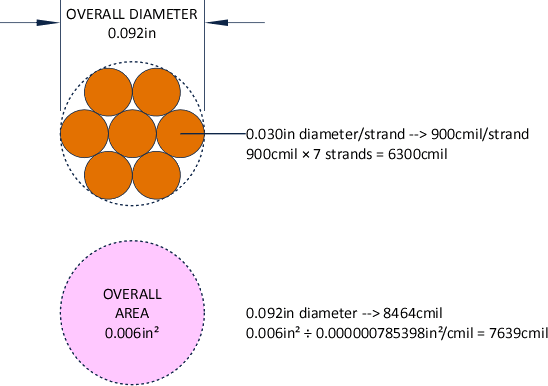kwired
Electron manager
- Location
- NE Nebraska
- Occupation
- EC
That makes the most sense to me. I was just blown away when looking at definition of what a circular mil is. The area of a circle that has a diameter of 1/1000 inches. Then got to thinking how would you stack a whole bunch of those inside another object without gaps and be able to determine the area of the larger object when you are not covering all of it? But just using a ratio to determine the area makes good sense to me. Everyone kept bringing up stranded conductors, and that is not what the question was or concerned, and besides we still determine the CSA of solid and compact conductors also, and they do end up being different diameters to get the same CSA of actual material composing the conductor.I think it is easier to think of circular mil area measurement as a ratio to the area of a one mil circle. See table below. Note the circular mil area is just the square of the diameter in mils. The resulting measure still covers the area of concern (the shape doesn't really need to be circular). In measuring multiple circular areas, such as stranded conductor crosssection, only the circular areas are measured. The gaps are not included.
mil diameter area (in?) circular mil area 1 0.000000785398 1 2 0.000003141593 4 3 0.000007068583 9 4 0.000012566371 16 5 0.000019634954 25 6 0.000028274334 36 7 0.000038484510 49 8 0.000050265482 64


